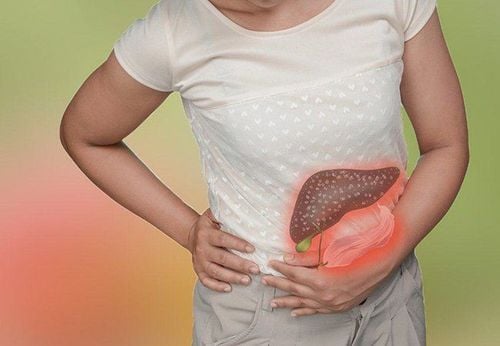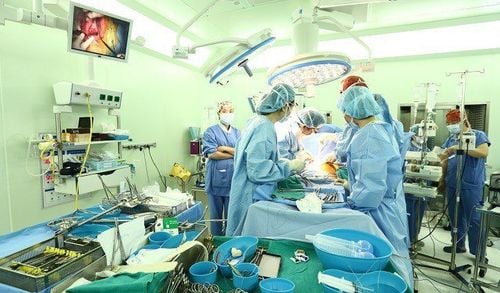This is an automatically translated article.
The article is professionally consulted by Master, Doctor Vu Tan Phuc - Gastroenterologist - Department of Examination & Internal Medicine - Vinmec Phu Quoc International General Hospital1. Indications for artificial liver dialysis
Hepatodialysis (MARS) is indicated for the following subjects:Acute liver failure:
Due to viral hepatitis (A, B, C), hepatitis in pregnancy (HELLP syndrome, AFL), toxicity, autoimmune hepatitis, vascular causes (Budd chiari syndrome),... caused.
Patient has the following symptoms:
Bilirubin > 8mg/dl (100μmol/l). Hepatic encephalopathy above grade II. Bacterial peritonitis, bacteremia, SIRS. Increased intracranial pressure. Progressive intrahepatic cholestasis. Renal syndrome. Acute exacerbation of chronic liver failure:
Patients with chronic liver failure have the following manifestations:
Serum bilirubin > 15mg/dl(255μmol/l). Hepatic encephalopathy above grade II. Renal syndrome.

2. Contraindications to artificial liver dialysis
This technique is not applicable to the following subjects:The mean blood pressure cannot be raised to >55mmHg by intravenous fluids and vasopressors. Severe coagulopathy DIC. Progressive bleeding.
3. Preparation before conducting artificial liver dialysis
Medical staff:Two doctors, one must be an ICU lead physician trained in hemodialysis. 3 required nurses trained in MARS hepatodialysis. Hats, shirts, sterile masks. Equipment:
Dialysis machine: Gambro MARS Prisma and compatible CRRT or IHD machine. 01 MARS kit includes: 04 filters, wiring system. 5000 ml of 0.9% sodium chloride solution to remove fluid from the dialyzer system. 01 set of continuous dialysis filter kit. Albumine human: 600ml 20% or 500ml 25%. 01 monitor for respiratory and hemodynamic monitoring. 01 set of 02 catheters with 2 caliber 12 F. 02 tubes of Lidocaine 2%. Bandages, sterile gauze, antiseptic alcohol, hats, masks. 01 vial of heparine 25000 units. The artificial liver dialysis machine is equipped with wire, filter, priming and loading albumin solution into the artificial liver system. Test the system before filtering. Patient:
Need instructions, explain to the patient if the patient is awake. Instruct and explain to the family if the patient is comatose. The patient's lying position is 30 degrees high. Clinical examination, complete blood count tests, coagulation, NH3, liver and kidney function, toxicology if suspected that the patient has toxic hepatitis. Ensure respiration with the goal of maintaining SpO2 ≥ 92% or PaO2 ≥ 60mmHg (with ARDS maintaining SpO2 ≥ 88%, PaO2 ≥58 mmHg) with measures, oxygen therapy and mechanical ventilation measures and treating the underlying cause. core. Measures to ensure circulation with the goal of maintaining mean blood pressure > 55 mmHg by means of fluid resuscitation and the use of vasopressors. Immobilize the patient in the event of a coma. Place a double-lumen central venous catheter according to the seldinger method, usually the femoral vein (see also the procedure for placing a double-bore catheter).

4. Process of artificial liver dialysis
The hemodialysis procedure is as follows:Step 1: Prepare
The MARS filter and the MARS kit are inserted into the MARS machine. Dialysis filters are fitted to a compatible CRRT or IDH filter. Priming with 0.9% sodium chloride solution was anticoagulated with Heparin 2000 UI. Load Albumine 20% 600ml into the extracorporeal circulation of the MARS cycle. Establish an extracorporeal circuit that connects the MARS machine to a CRRT or IDH machine. Step 2: Connect the extracorporeal circulation to the catheter and set the parameters
Connect the circulation of the artificial liver machine to the patient through a double-bore venous catheter. Machine parameter setting: Blood flow rate 120-200 ml/min. Albumine flow rate 120-200ml/min. Dialysis fluid flow: 300-500ml/hour (if not renal failure creatine <120), if renal impairment (creatine >120) dialysate rate 1000-2000ml/hour. Press the "Start" button to pump blood for the machine to run. Heparin anticoagulation pump setting: Food safety > 60 or platelets < 60,000/ml do not use Heparin. Food safety from 40 to 60 and platelets > 60,000/ml using Heparine 5UI/kg/hour. ATPP < 40 and platelets > 120,000/ml Heparin 10 IU/kg/hour. Reassess food safety every 8 hours adjust Heparin to maintain food safety for 60-80 seconds. Step 3: End of filtration
Reduce blood flow rate. Pressing Stop pump blood switches the catheter outlet to fluid and clamps again. Returns blood from the extracorporeal circulation to the patient. When the blood has returned, stop pumping and clamp the other end of the catheter. Inject anticoagulation into the catheter and cover the catheter if the catheter is to be saved. Dialysis time:
Treatment time from 8 hours - 24 hours. The first three times in 3 consecutive days. From the fourth day, only conduct MARS filtration when the Bilirubin level increases beyond 1.5mg/dl/24 hours or again exceeds the threshold of 15mg/dl. If Bilirubin levels rise again to more than 3mg/dl within 48 hours, MARS should be repeated.

5. Complications and treatment when hemodialysis
In the process of hepatodialysis, the following complications often occur:Complications of membrane occlusion:
The cause is usually due to inadequate anticoagulation, it is necessary to monitor and adjust the dose of heparin according to food safety and platelets. The early manifestation is high pulmonary embolism pressure (TMP) when TMP >60 mmHg. Action: Stop filtering and replace with another MARS Prisma filter. Complications of membrane rupture:
May be caused by trauma to the filter, or it may also be due to high transmembrane pressure that is not treated. Expression of TMP is very low, there is blood flowing into the fluid cavity, low TMP alarm. Treatment: stop dialysis, change another filter. Complications of hypotension:
Urgent need to rehydrate, use vasopressors in case of enough fluid rehydration but blood pressure is still low. May be combined with vasopressors to maintain blood pressure in case of need. Forced to stop dialysis if blood pressure cannot be raised (mean BP <40 mmHg for 10 minutes after vasopressor administration). Bleeding complications:
Bleeding at the catheter site: Apply compression and re-test the platelet count, food safety, INR, dose of heparin being used. Bleeding at other sites: Usually due to a clotting disorder. At this time, it is necessary to re-test for clotting factors and platelets. Carry out compensating for clotting factors or platelets depending on the specific situation. Mandatory discontinuation of MARS for uncontrolled severe coagulopathy. Infectious complications:
Manifestations are local swelling or bacteremia through the catheter. Treatment: Stop the dialysate, remove the catheter, remove the catheter tip, change the filter site to another place. Give antibiotic treatment such as nosocomial infection due to catheter access.
Please dial HOTLINE for more information or register for an appointment HERE. Download MyVinmec app to make appointments faster and to manage your bookings easily.














